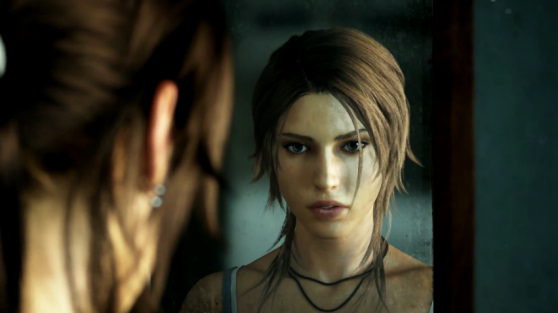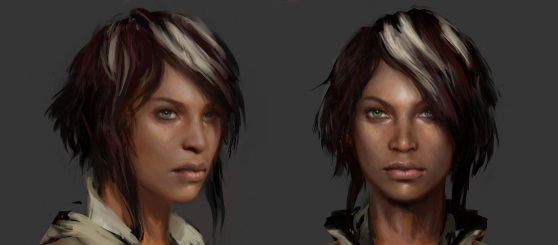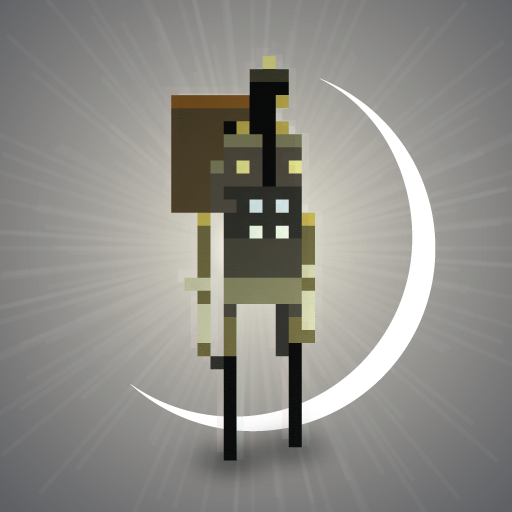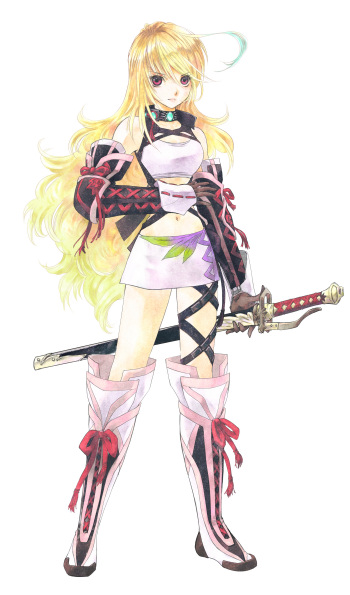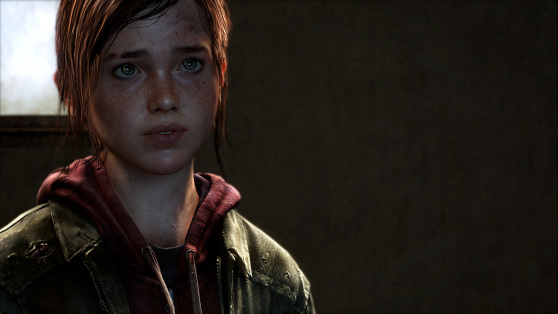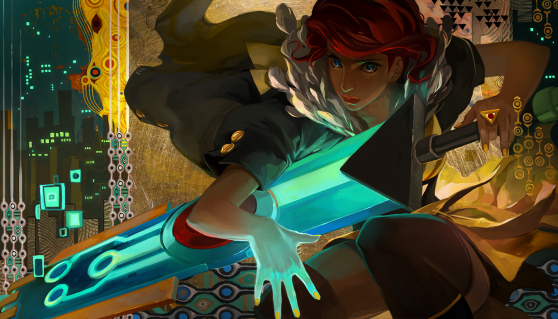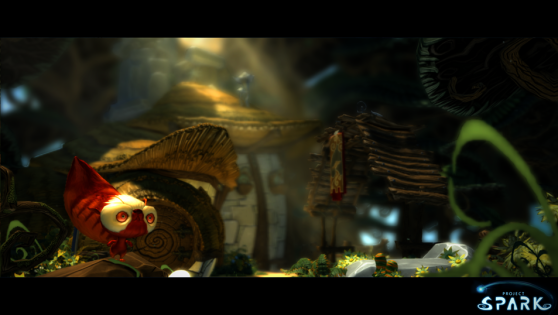Video games have long neglected the potential of female heroes, instead putting women in princess or other subservient roles. We may be headed in a better direction, as 2013 has been a record year for memorable, well-developed female leads. Lara Croft made her comeback through a personal journey in Tomb Raider, Elizabeth proved herself a worthy ally in BioShock Infinite, and Ellie did young girls proud in The Last of Us.
GamesBeat talked to some of the developers of these games and more, asking what makes women characters important? Diversity is something we should strive for, but are we missing more compelling reasons for including them? Do Lara and Ellie only matter to fill the gender gap — to appeal to a wider demographic and counter narrow marketing assumptions?
Is gender irrelevant?
When asked what female characters bring to games that’s unique, some developers pointed out that, when they first imagined their lead character, they didn’t plan to make her female.
“I don’t think there are advantages or disadvantages per se, and we certainly didn’t start the project thinking we must have a female lead,” said Jean-Maxime Moris, the creative director and cofounder of Dontnod Entertainment, the developer of action-adventure game Remember Me. “In the same way male characters should not be seen as better than female ones based on the gender factor, female characters should not be seen as better based on that sole fact, either.”
The same qualities are important to both male and female characters: resonating personality traits, internal conflict and growth, and so on. The goal is to write a strong character regardless of sex or gender, he said.
“Our audience is smart, and our media is maturing, however slowly,” said Moris. “Movies and books have had female characters for decades and centuries, so what I am doing is just treating our audience as one made of mature human beings that can identify with females as much as males, gender being absolutely irrelevant to the depth of what human beings experience and achieve in the world.”
Despite how human experiences can surpass gender barriers, Dontnod chose to make its hero a woman for a reason: Nilin’s gender benefited the story by working to emphasize a perspective we don’t normally see.
“Remember Me revolves around a cyberpunk story of intimacy and personal memories, which is very different from more traveled cyberpunk themes like physical augmentation,” said Moris. “In order to mark that difference further, we decided to go for a female character. It was a very natural process.”
Moris clarified that this doesn’t mean female characters suit the theme better than their male counterparts. “I was saying that cyberpunk games generally revolve around body augmentation and suggesting the fact that they all tend to feature male characters.”
However, Dontnod deliberately chose to turn against the norm of both male leads in sci-fi roles as well as the typical expression of cyberpunk. Perhaps gender plays a bigger role in story creation than developers may be willing to admit.
New directions
Take indie-adventure game Superbrothers: Sword & Sworcery. Due to the pixel graphics, it’s easy to overlook that the lead character, the Scythian, is a woman. This was intentional. Designer Craig D. Adams and the staff at Superbrothers said that they chose to reveal her gender “when the time is right,” much like Samus Aran in the Metroid series, “whose gender identity is perhaps secondary to her attitude.”
The Scythian’s gender is also one of historical importance. “[She] is intended to be a sister-of-sorts to the ‘Amazon queens’ mentioned in Homer’s Illiad, a tribe of warrior women who we now know exist in the archaeological record in Bronze Age Persia and Scythia,” said Adams. “The Scythian exists in a world both whimsical and imagined, but we wanted it to have a soul and a texture grounded in this historical reality.”
He added, “The end of her story sidesteps the traditional action-packed boss battle in favor of a kind of cosmic Joan of Arc moment. A male character could have probably embarked on the same adventure, but perhaps the story and the tone would’ve ended up in a more traditional place.”
Adams was reluctant to expand on this idea, however.
Emotional connections
The role-playing game Tales of Xillia, which Namco Bandai localized in North America this month, introduces the first woman protagonist to the Tales series. Producer Hideo Baba told us that “much of what determines a character’s gender comes from the game’s story.” While Milla Maxwell appeals to the female crowd, “anyone can be a hero,” he said. However, sometimes one gender may be more appropriate.
“I do believe that there are specific emotions that cannot be depicted easily with male characters or not at all, such as the special bond a mother shares with her children. The unique benefit to both female and male characters is that the player can be provided a different outlook on life.
“There are discoveries to be made in different ways of experiencing new points of view and values these characters have toward the opposite gender. However, in the end, what’s most important is not the gender of the character but their human nature.”
The feminine perspective may reach beyond our shared experiences as human beings, though. It can also offer more than a means for historical accuracy or a way to reverse story expectations. For some developers, female characters not only serve to represent women but also inspire commentary on women’s issues. And sometimes, a larger message is at stake.
Demographics as a positive force
Because women leads are still rare, “a lot of weight is put on them as women,” said Brian Horton, the senior art director for Tomb Raider at Crystal Dynamics. “But male leads are not framed as ‘male’ heroes.”
He said, “It’s important to show more females break stereotypical roles in games. Lara may be unique in the game environment, but it doesn’t have to be that way. I hope we see a time when it’s not really a big deal to have a female lead and framed as something unique.”
A common presence of women as characters would provide for more than overcoming gender expectations. It could help build better relationships with an audience, too. Lisa Roth, the executive producer of the Zumba Fitness franchise at Majesco Entertainment, says the way the company portrays women must be faithful to reality.
“There are both men and women teaching Zumba classes around the world, and men’s and women’s bodies in motion are quite different visually, so it’s important to have both represented within our content,” she said. “Featuring women dancers shows the way a woman would perform a choreography versus how a man would handle it.”
Perhaps demographics are the answer to breaking another stereotype: the big-breasted, gorgeous character who’s proportionally compromised to suit the male gaze, where women become sexual objects with little power or authority of their own. As with Zumba Fitness, they could act as a gateway for learning to serve an audience instead of merely driving marketing decisions.
Neil Druckmann, the creative director on The Last of Us at Naughty Dog, described one situation where Ellie’s presence in The Last of Us enabled the team to broach a topic relevant to women and girls in society.
“There’s a part in the game that’s a side conversation where she sees a poster of a really skinny model, and she talks to Joel about it,” said Druckmann. “She says, ‘I thought people in your time had plenty of food and all this stuff.’ And he explains to her, ‘Yeah, but some people just starve themselves for looks.’ And her remark is, ‘Well, that’s stupid, that doesn’t make sense.’ So she’s not exposed to the media that normal people are exposed to and, you could argue, in some cases corrupted [by it].”
He said, “The concern there is that you start getting heavy-handed, and the message becomes overwhelming to the story. So I think you always have to sneak that stuff in there.”
Why gender matters
Writer Greg Kasavin of Supergiant Games made it clear that Red, the main character of the upcoming turn-based strategy game Transistor, is “just our character.” The developer doesn’t think of her in terms of gender.
But gender identities are important as they can be an “access point,” Kasavin says, for people who want to play games with characters they can relate to.
“That said, I feel like if a developer approached the issue from a standpoint of ‘How can we include female characters in our game,’ they are already going about it in a creatively bankrupt way, even if it’s well intentioned,” said Kasavin. “Developers might be better off concerning themselves with why having interesting characters matters in the first place. A character’s gender in and of itself does nothing to make him or her interesting, but a character exists in a broader narrative context in which gender choices may be significant and may be part of the politics in an interesting way.”
Kasavin said that trying to force in diversity — of gender, sexual orientation, or ethnicity — stands “a high risk of resulting in some very disingenuous or even insulting games.”
The writer pointed to The Chronicles of Riddick: Escape From Butcher Bay, one of his favorite Xbox games, as an interesting case study. In it, women are noticeably absent — and never mentioned or shown, either.
“I felt it was a deliberate artistic choice, not born of ignorance or insensitivity but rather a decision that was fully aligned with creating the game’s unique tone and atmosphere,” said Kasavin. “Maybe the idea of a game with no women in it is somehow offensive, but I found this sort of deliberate omission of gender to be much more honest and interesting than the typical shooter, with its gratuitous female briefing character or love interest.”
Developers need to put more thought into creating the “right characters” for their worlds, he said. “The more that happens, the more interesting characters I think we’ll see, many of whom will be women purely from narrative necessity.”
Gender provides insight
Emotion and introspection do not make female characters weak, as many people suspected of Lara Croft, said Tomb Raider writer Rhianna Pratchett.
“The argument continued that because it’s not often shown in male games characters, it shouldn’t be in female ones,” she said.
That line of thinking reveals more than our views on women; it reflects on male stereotypes as well. “I think this is a more of a problem with the narrow way we’ve represented male characters in the past rather than an issue of judging all female characters by the standards of the males that have gone before,” said Pratchett.
“Some of the most profoundly gender-based feedback we got was from male players who said they’d been given a new insight into being female by playing as Lara — particularly when there was the brief threat of sexual assault from one of the enemies in the game,” she said. “Suddenly males found themselves put into a position they would be unlikely to experience in the real world but one that women are — sadly — only too familiar with.”
She said, “In one camp, you have people saying ‘gender shouldn’t matter.’ In the other, you have people saying, ‘We want more female leads/better female representation.’ So clearly, it does matter even if we’d rather it didn’t.”
A bigger problem
The fight for female representation is one that game designers Brenda Romero of Loot Drop (and formerly the International Game Developers Association) and Kim McAuliffe, who’s working on Project Spark at Microsoft, know all too well.
“It’s a question of wanting to see your reflection in a game,” said Romero. “If you feel like you’re represented there, you likewise feel welcome there.”
For them, the inclusion of women as characters points to that of female developers. Romero recalled a moment when her perspective uniquely influenced a game’s design.
“When [id cofounder John Romero] was designing Ravenwood Fair, I remember feeling a lack of closure when I finished playing a session,” she said. “In a nutshell, it was because I couldn’t do anything to protect the characters from the creatures in the forest who were out to get them. I knew that nothing happened in the game while I wasn’t playing it, but still, the feeling persisted and was enough to affect my enjoyment of the game. It was not a feeling he had nor any of the male testers of the game. Among women, however, it was an issue.”
They settled on a solution: a protector system in which totems kept the characters safe when players left the game. “If they got scared, players could even comfort them,” she said. “It was a subtle design change, but a big one, and of all the design in that game, it remains one of the things he is most complimented for.”
McAuliffe believes that the lack of women in development roles stems from female representation in games. She and Romero have spoken about the problem before.
“Someone approached me on Twitter about my statement that as a kid, I would only play as the female character if there was one available,” said McAuliffe. “He said it was the same for him and race; if there was a black character option, he would always pick it. So I believe it’s important to have character options that are diverse in gender, orientation, and race not for the sake of diversity as a principle but because people long to identify with the games and characters they are investing their time and lives in. It also makes them feel welcomed by the game, like they belong, which is key to continuing to play and growing up to be part of the industry.”
Women characters have the power to introduce new perspectives, she said, especially if the developer “is willing to dig into what life is really like for the average woman.” That could even lead to new approaches to game design.
“I think game scenarios like this would be very eye-opening for people.”
As Romero pointed out, more female developers could help open the doors to these perspectives.
“It also isn’t limited to female characters,” said McAuliffe. “The real question is not why having female characters could be important; it’s why having characters that aren’t buff, white, close-cropped, stubbly, heterosexual men could be important. Variety. Freshness. New perspectives. Making a wider audience feel welcomed, and broadening the horizons of the ‘traditional’ gamer.”
The face of video games is changing for the better, with icons like Lara Croft evolving from sex objects to characters with perspectives worth exploring. However, developers need to think harder about why female characters matter. It’s easy to get caught up in terms like “diversity” and “marketing” and imagine little value beyond a broader appeal, but they’re important to more than demographics. Their presence encourages developers to discover new gameplay designs and stories with purpose, allows them to create deeper emotional experiences with both male and female characters, and gives us insight into each other’s lives.
Most importantly, the more female characters we bring into games, the more we’ll open the industry to developers and gamers of any gender, race, or sexuality.
VentureBeat's mission is to be a digital town square for technical decision-makers to gain knowledge about transformative enterprise technology and transact. Learn More
